I haven’t written about my own garden for a while and I thought that, since so much is blooming, this would be a good time for an update.
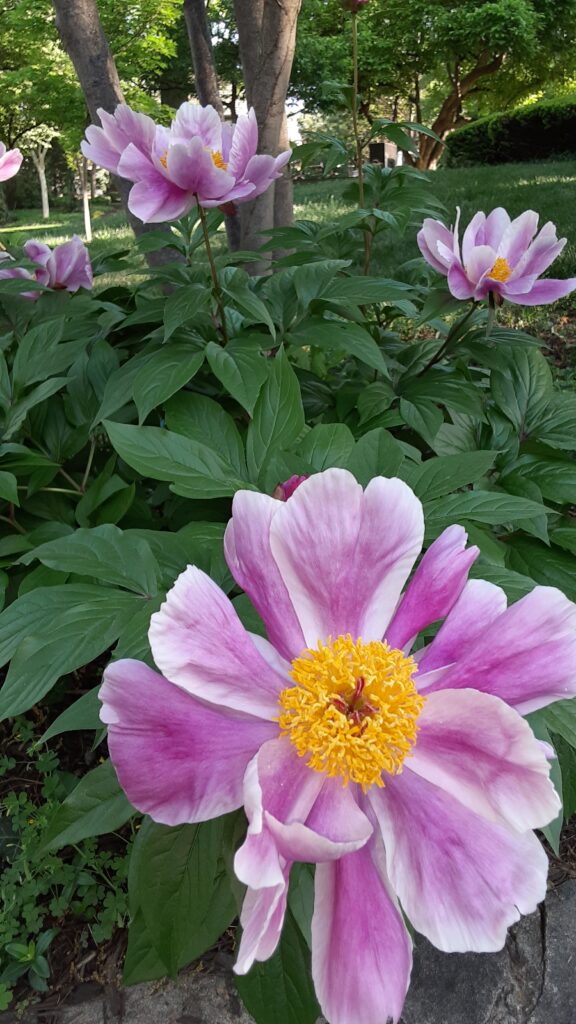
And exhale a rainbow
The peony!
– Buson
Peonies: roses without thorns
This year has been great for peonies. I was going to write a research paper-type post about them, but found this site that answers all my questions.
This blog for a nursery in Connecticut goes deep into subjects like the etymology of the name peony, peonies in Chinese and Japanese art, medicinal uses, and a list of notable of collections in the US. The list includes the tree peonies at the Linda Hall Library.
Bradford pears: “rogue” trees
Last week my semester ended, I hopped on a plane for a short trip to the Bay Area.

We came home to this.
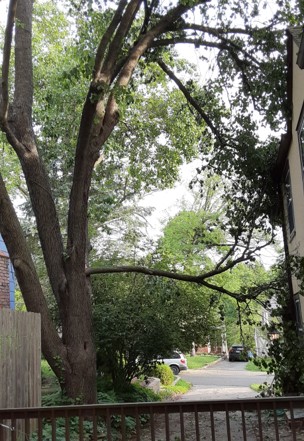
While we were gone, this Bradford, or Callery, pear fell on our house. We’re lucky. Nothing was damaged; no one was hurt. Today we’re getting rid of the tree entirely.
I understand there have been some metro-wide (both Missouri and Kansas) programs that encourage people to chop down their Bradford pears by offering a native tree as a replacement. Called the “Callery Pear Buy-back Event,” sponsored by the Missouri Invasive Plant Council, the idea is that someone cuts down their Callery pear, submits a picture of themselves standing by the stump, and they can get a free native tree, such as serviceberry, river birch, green hawthorn, or chinkapin oak. This story from KCUR explains the program, as well as the problems associated with the trees, in more detail. (Check out the images showing how quickly the trees have spread.) They call them “rogue trees.”
I’m afraid the deadline has already passed for 2022, but this nuisance tree is still worth getting rid of, as our experience shows.
Good news: new plants
I tried growing several things from seed this year and I’m happy to report some success. These foxgloves (Digitalis purpurea) aren’t native, but I stuck the seeds in some dirt last spring and waited. They don’t flower until the second year, but here it is, year two, and they look great (although they’re taller than I thought they ‘d be). I hope I can move them after they finish blooming, as I understand the foliage looks scraggly as they go to seed.
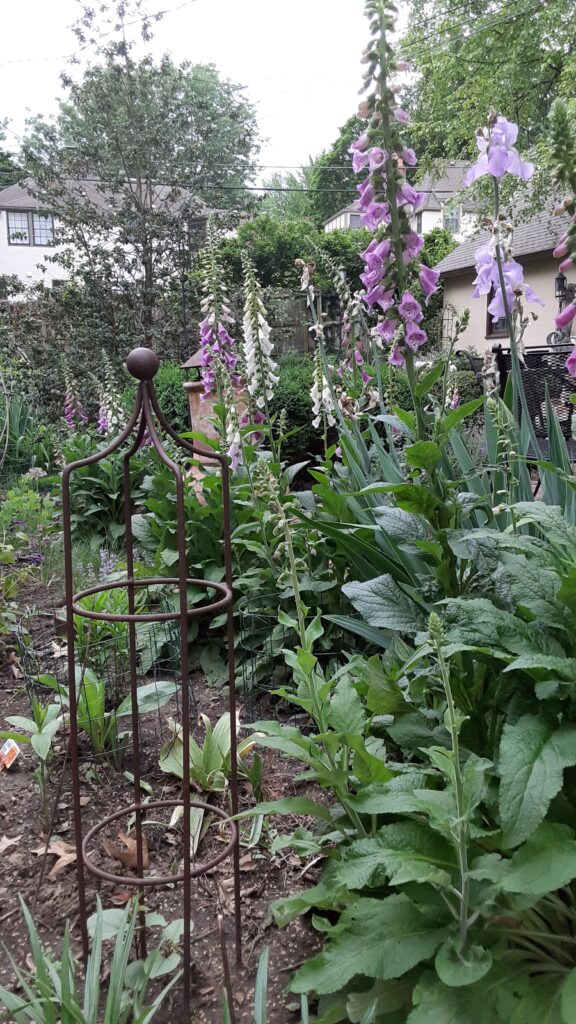
I also have these experiments going: Penstemon ‘Dazzler blend,’ “a wonderful dwarf”; Verbena ‘Brazilian Vervain,’ and Salvia ‘Blue Victory.’
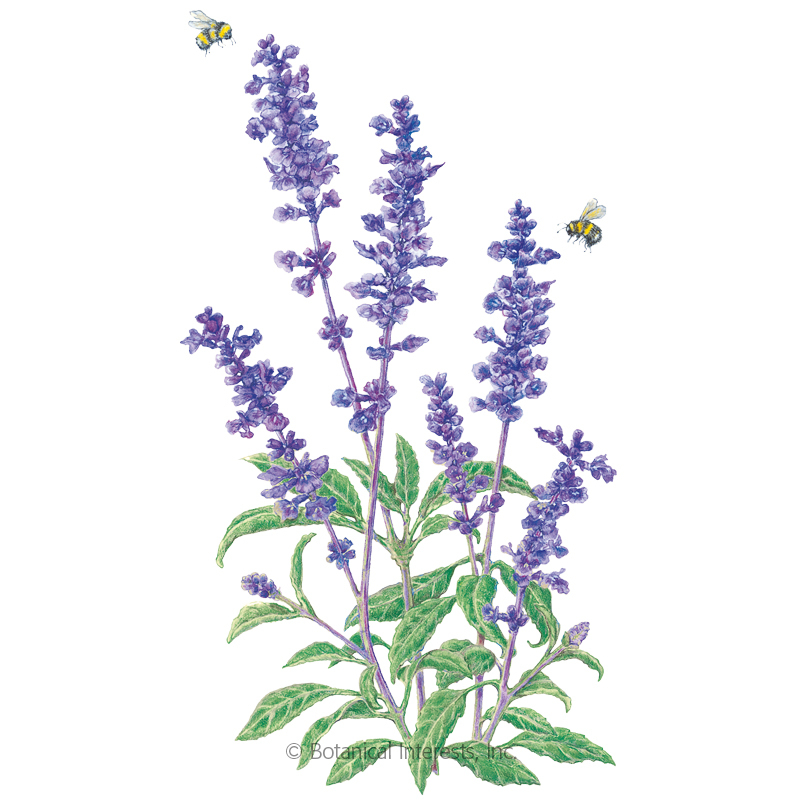
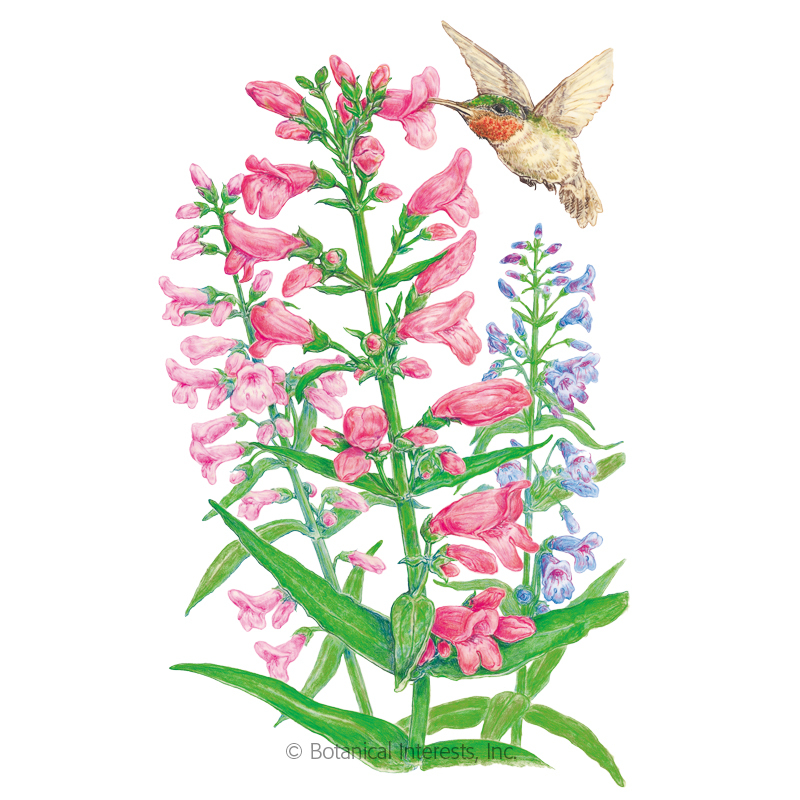
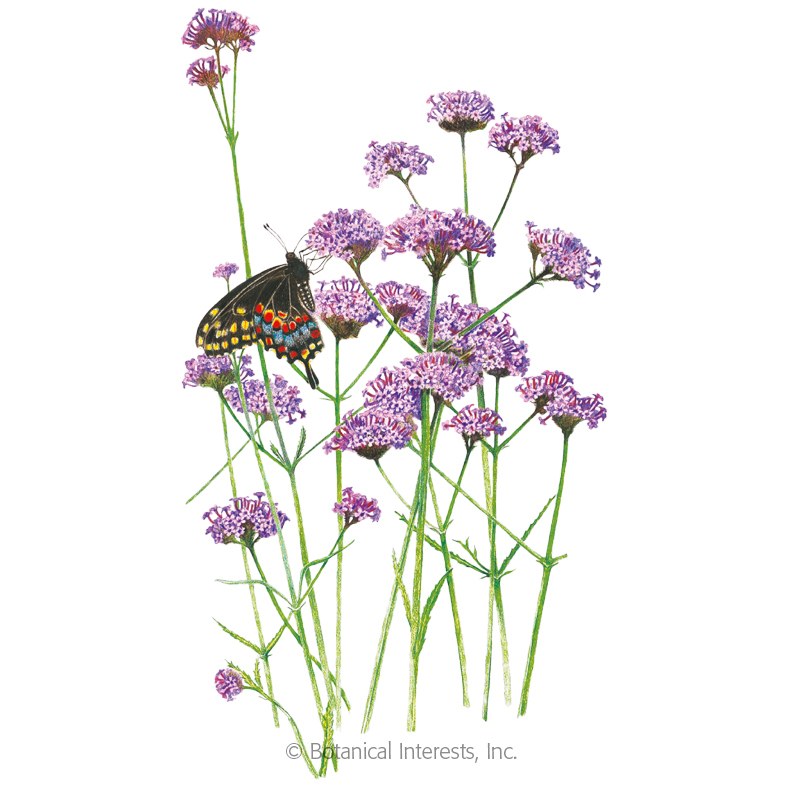
Here they are in real life.

To achieve rhythm and repetition, a garden requires many plants. Many plants require lots of money–unless they don’t.
One thing I’ve learned, if you have friends who garden with native plants, and if you walk by while they’re outside working, they may give you plants. This is what happened last week when I walked by my friend Richard’s. He was busy pulling an invasive pea-looking thing out of his poppy mallow and we got to talking. The natives on his property are happy, some too happy, which turned out well for me. I came home with Eastern Blue Star (Amsonia tabernaemontana), spiderwort, and Bottlebrush Blazing Star.
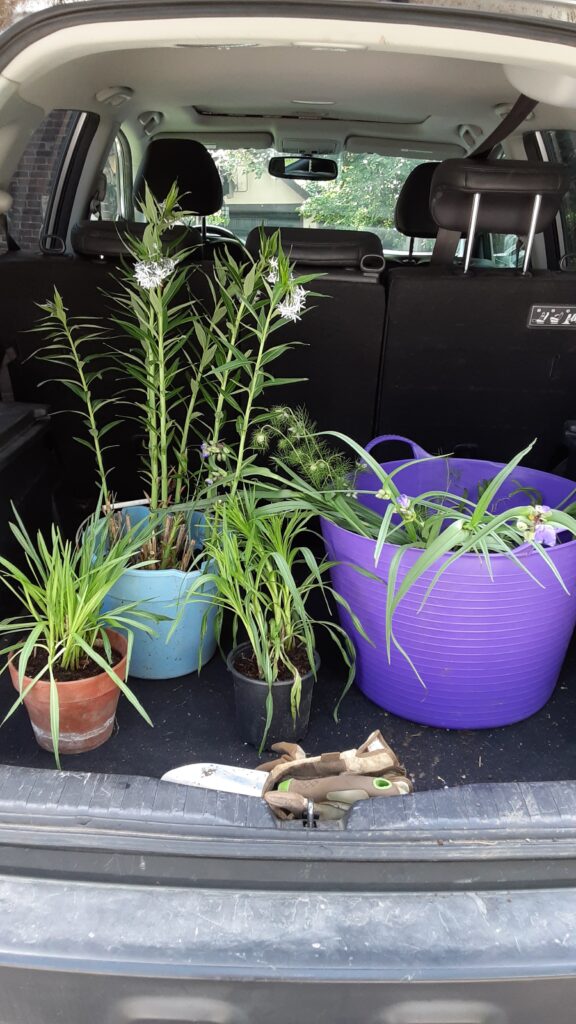
Richard’s plants are much more developed than the ones I bought at plant sales this spring. See how the other amsonia looks kind of sickly in the foreground? His have blooms. I transplanted them on a hot day, and they didn’t even wilt.
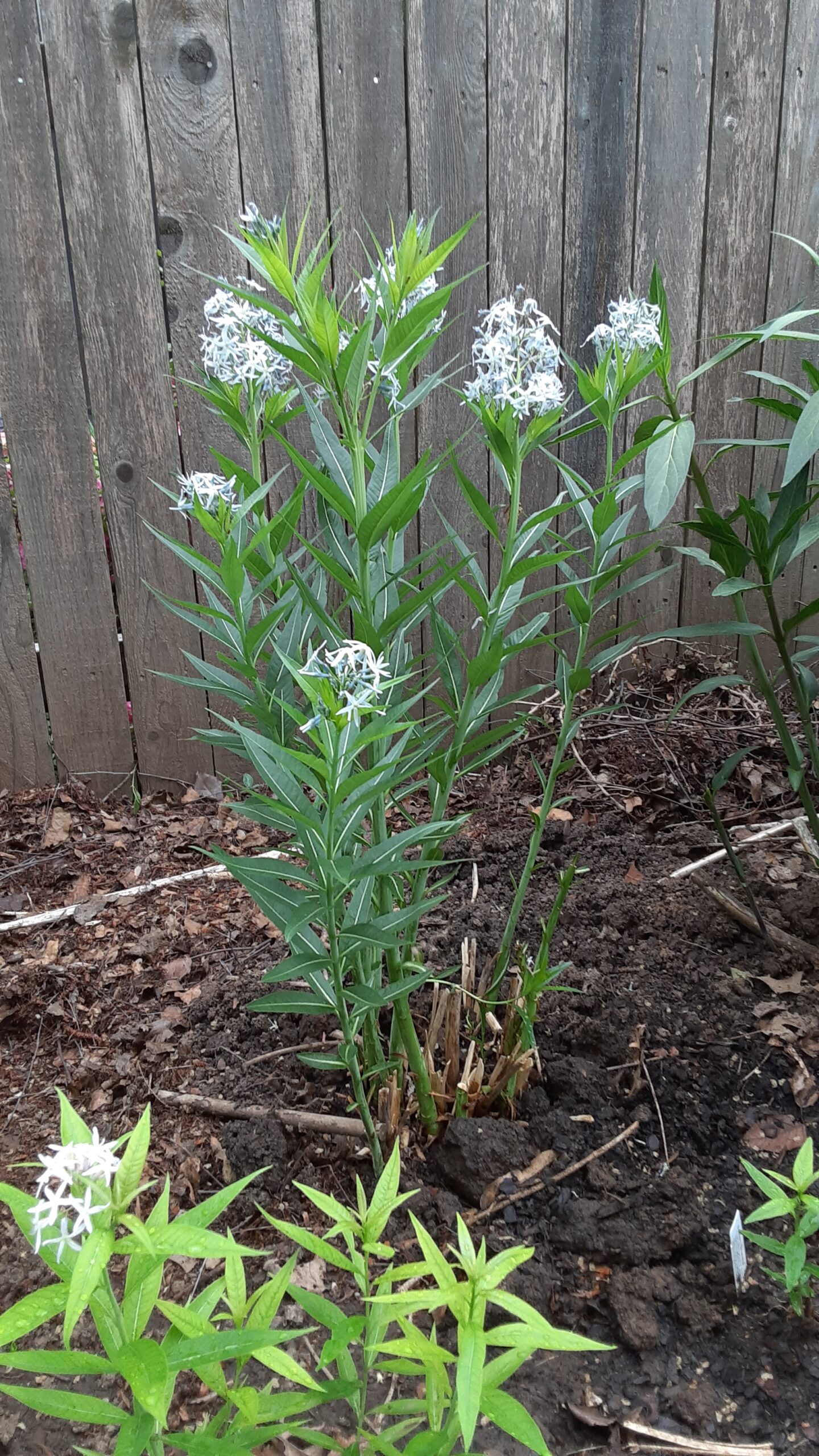
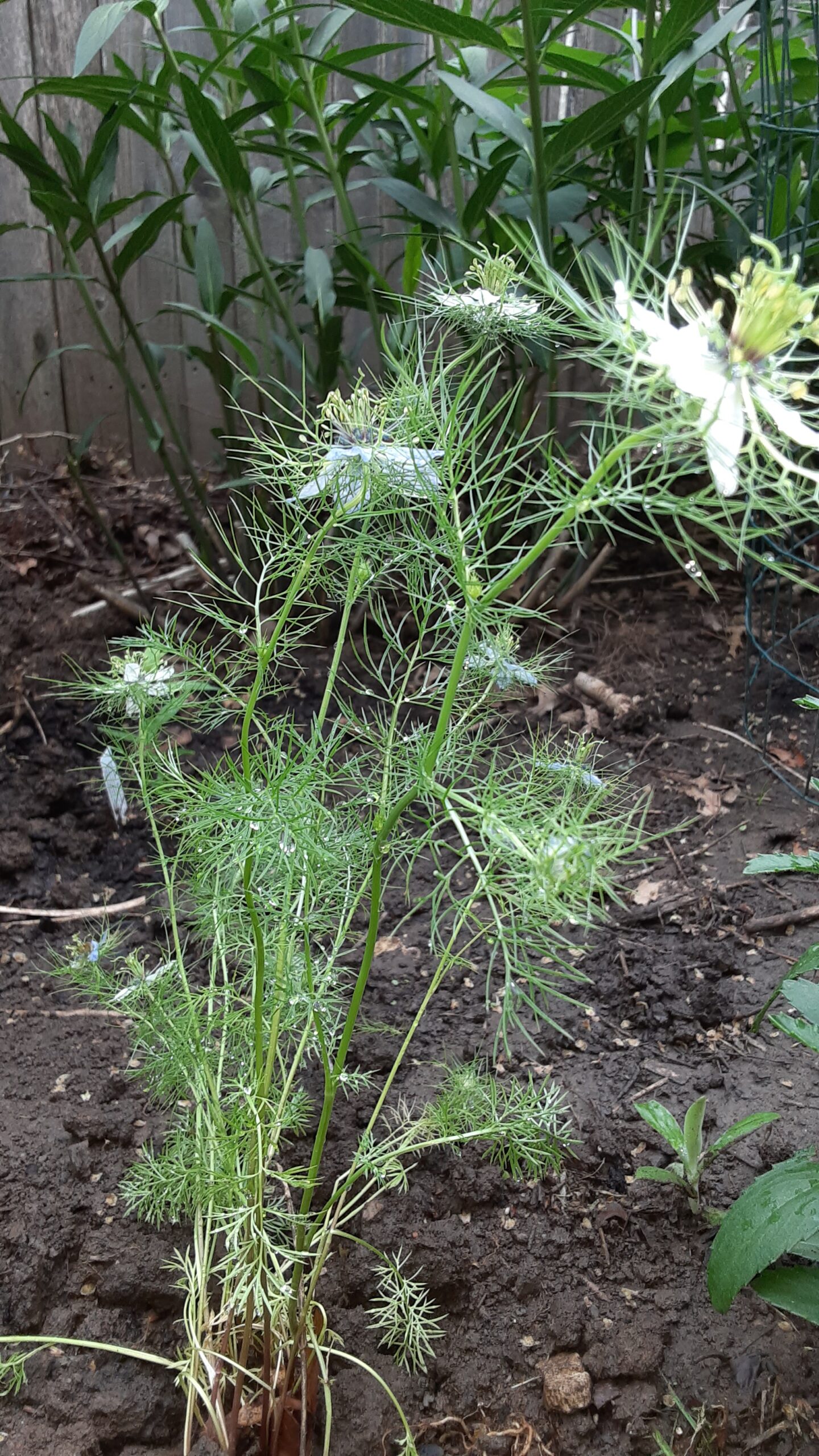
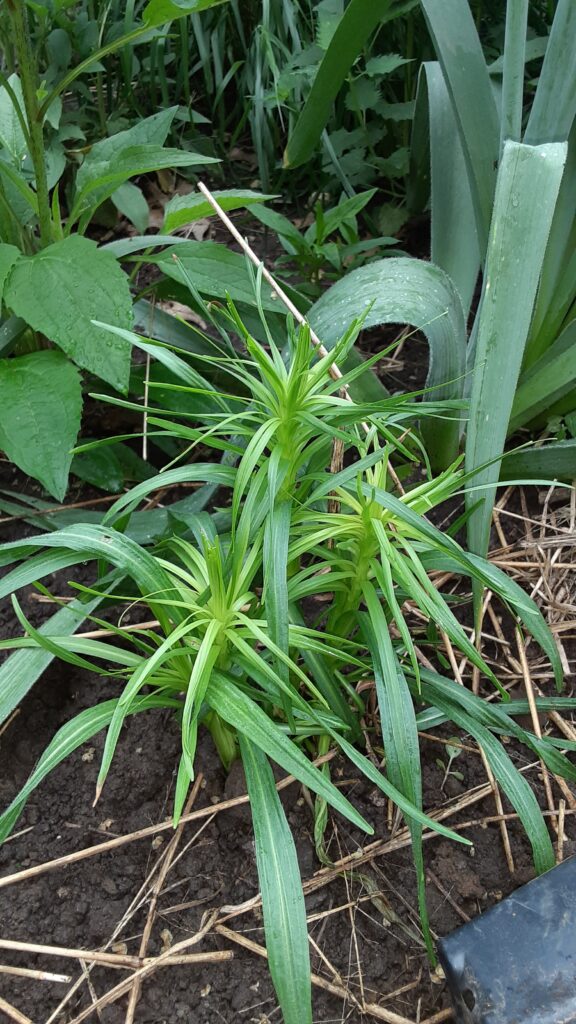
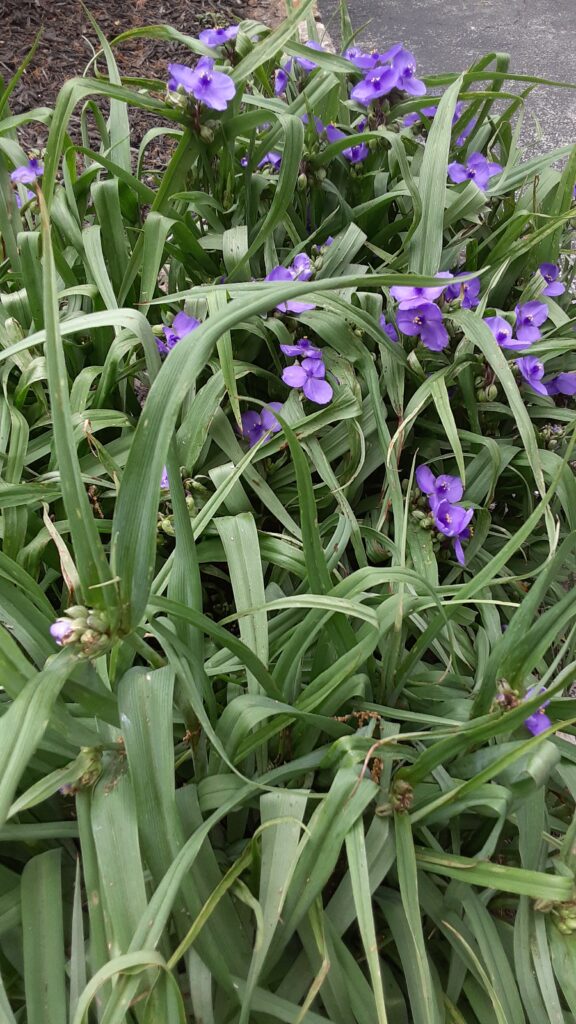
Then I was wishing for something tall and viney to cover a bare area along a fence when my neighbor Carole offered me Dutchman’s pipe vine (Aristolochia tomentosa). It sounds delightful but will need a stout support, so I’m waiting to transplant until I’ve built one.
I like the idea that gardening is taking place outside the domain of commerce and money, the usual ways we assign value. These gifts made me so happy, I’m resolved to pay things forward by giving away some seedlings of my own. I have Sweet Coneflower (Rudbeckia subtomentosa), which is great but tall; Swamp Milkweed (Asclepias incarnata), also tall; and oregano I just can’t seem to eliminate. I’m going to leave these on a table later today at the park at 50th and Rainbow.
Tomorrow I plan to visit the Union Hill Garden Tour, one of my favorites. Perhaps I’ll see you. Thanks for reading!
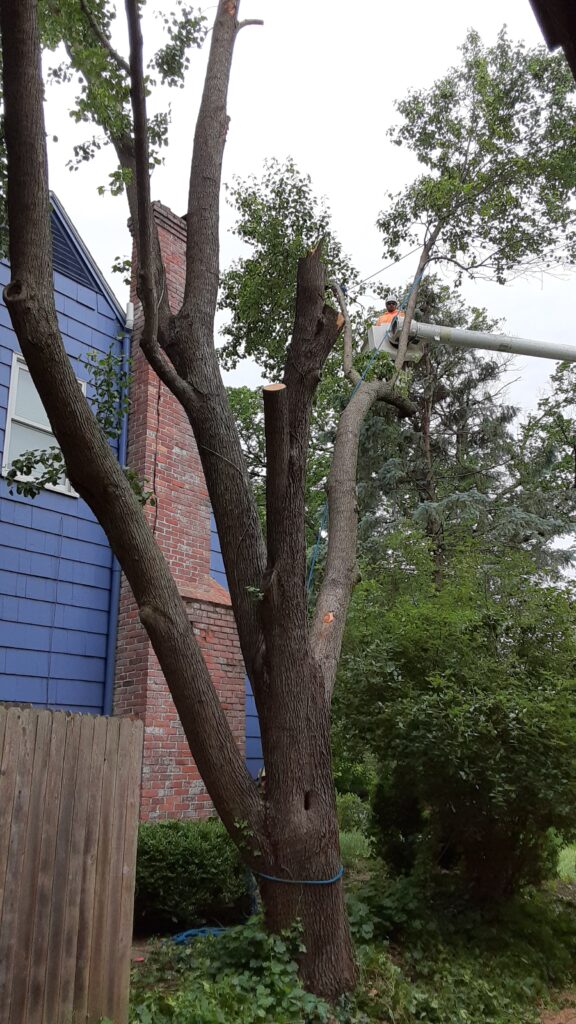
References
https://moinvasives.org/2022/03/10/callery-pear-buy-back-event-4-26-22/
http://www.missouribotanicalgarden.org/PlantFinder/PlantFinderDetails.aspx?taxonid=259723
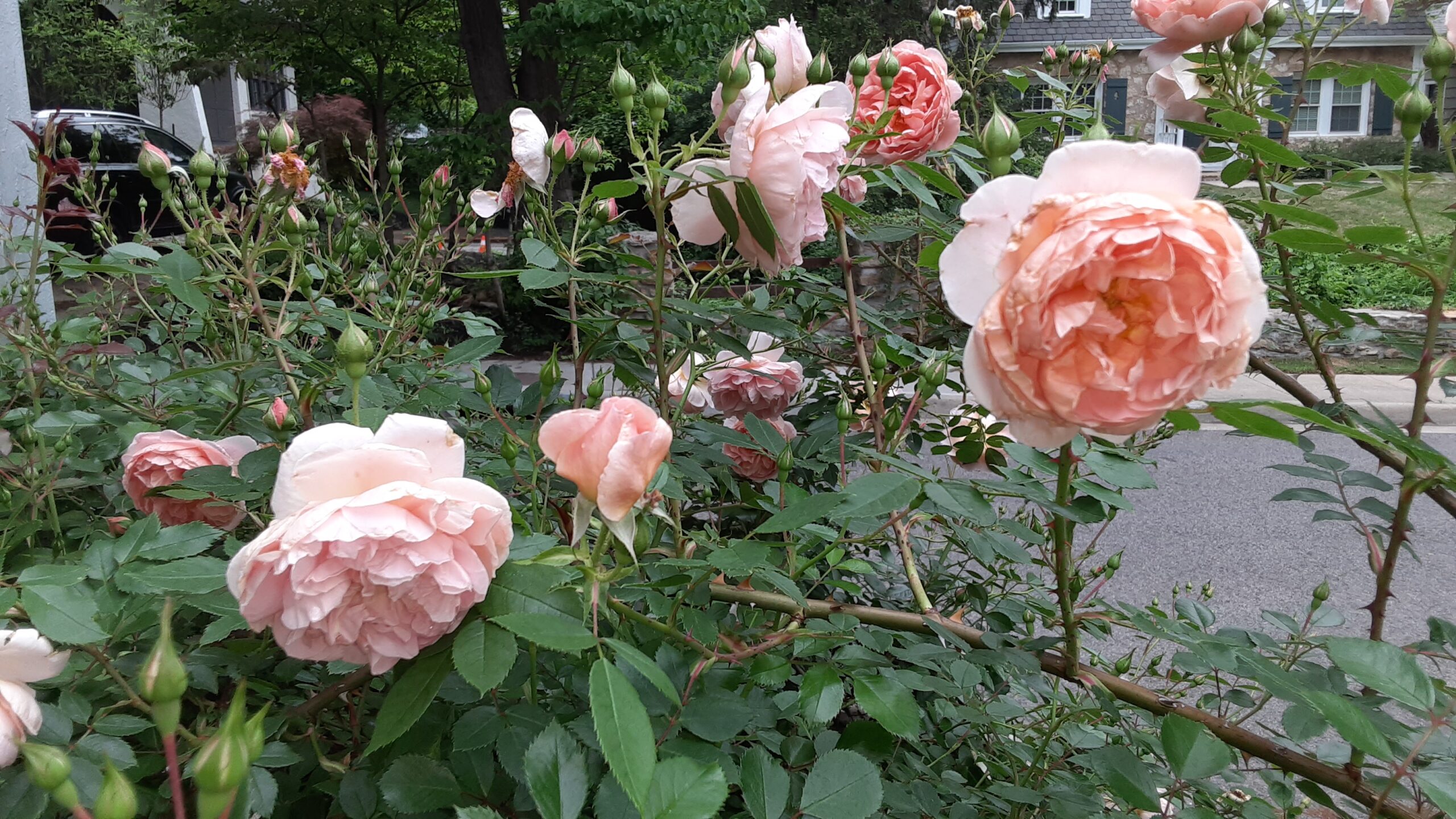
what is labeled as coreopsis is actually love in a mist, or Nigella. Great, reseeding plant, just like coreopsis. The peonies are gorgeous – wish they grew inTexas!
Hi Karen, I fear you’re right. I’ll correct that. It’s not native, but I’m still happy to have it. Thanks for reading.